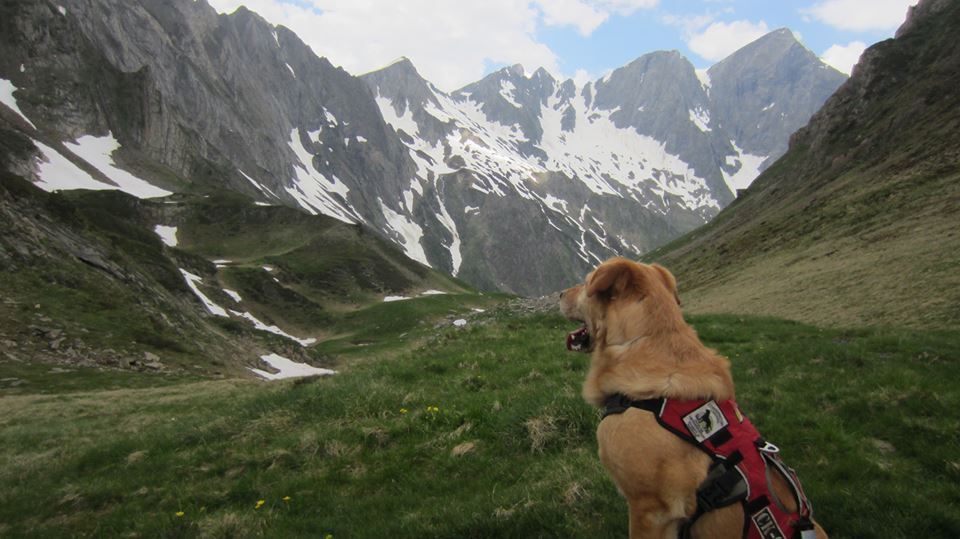
Chester takes in the view of the Pyrenees Mountains in Southwest Europe before venturing out to locate brown bear poop. Photo courtesy of the Conservation Canines program
From orcas to caterpillars, a few dogs at the University of Washington can find nearly any animal you'd want to find - by looking for what they've left behind.
Since 1997, the UW Conservation Canines program has been training former strays - shelter dogs too aggressive or feisty to be adopted - to protect endangered species. Their tactic: letting them traverse plains, climb mountains, trek through snow, and clamber over rocks and fallen trees all with the expectation of reward: a rubber ball to play with.
"The dogs all have such unique personalities," said Heath Smith, the Center's program coordinator. 'Watching them learn and get excited about the work that their doing is fantastic. We’re basically taking animals that have run out of chances and giving them a second chance to help save a population."
The program’s team of handlers works with a motley crew of 17 misfits-turned-dog detectives, some who are as old as 12, to track animal feces. Scat (poop) samples are then taken to Johnson Hall to be tested.
From a scat sample, researchers are able to identify what types of pressures certain populations are facing, including toxicity levels, diseases, and dietary factors. It also helps researchers make population estimates in any given area or discern which environmental factors are having negative impacts on animals.
"Our focus is educating people on what’s having a harmful effect on populations and working to reduce it," said Smith. "We publish papers for the research community to hopefully spark action."
The conservation team and their dog detectives have been all over the world – traveling as far as Africa to working as close as the Puget Sound. The dogs have located the droppings of over 40 different species, ranging from tigers, wolves, and bears to jaguars, spotted owls, and caribou. When they're not searching in the wild, the dogs are housed at the training facility at the Pack Forest in Eatonville.
"Our work offers a nonbiased and noninvasive approach," said Smith. "It’s noninvasive in that we don’t have to trap or tag the animal. It’s nonbiased because we’re finding their spore sample that they left in the environment."
It’s a highly popular approach, said Smith. The dogs are able to cover a huge amount of area in a short period of time and collect massive amounts of data in the process.
This data has been helpful to researchers both at home and abroad. The Canines Conservation program has been working for a wide variety of people – whether its biologists with state or federal wildlife departments or scientists as far as Africa, Turkey, Portugal, or France.
But the conservation team hasn’t forgotten about what’s happening in Washington’s own backyard. Studies surrounding spotted owls, killer whales, and wolves are also on the team’s radar.
"Those are some of the environmental issues closer to home," said Smith. "We see how the dogs really benefit from collecting a huge amount of data so quickly to help us answer questions about certain species. It’s all very rewarding."